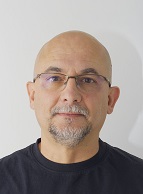- Presentation
- Members
- Research Lines
- Projects
Presentation
The Communication Systems and Equipment division has specialized in information security of communications and in identification and management systems for people. In the first line, we develop cryptographic modules for large companies such as Thales e-transactions, integrating cryptographic algorithms and protocols into their TPVs of the Talento and Artema families.
In the second line, all R&D has been focused on the development of the "Arquero Corporate System" product family, which includes access and intrusion control modules, presence and schedule management, and point of sale.
This family is based on a security architecture that relies on X.509 certificates and the TLS-1 protocol.
Director:
Communication Systems and Equipment (COM)
Responsible: Dr. Alfonso Medina Escuela
UNESCO Code: 3325
SL1.1: Photonic Sensors and Laser Remote Sensing
T1: Development of electronic systems for plasmonic biosensors
Surface plasmon resonance spectroscopy. Development of electronic systems and electromechanical designs in compact clinical analysis devices (POC). Complete integration into analytical platforms, including micro/nanofluidics, lasers, optical subsystems and interfaces, biocompatible encapsulation, hardware, and software. Biosensors have countless applications in modern society, ranging from the pharmaceutical industry, the food sector, environmental control, national security, and especially in the clinical diagnosis sector, the latter being the area of ??greatest socio-economic impact. The aim of this line of work is to develop bioanalytical applications in clinical, environmental, and molecular biology.
T2: Development of measurement and detection systems using lasers
Development of high-frequency pulsed laser control electronic systems and high-sensitivity optoelectronic sensors that allow generating digital maps from aircraft (helicopters and airplanes). The work is multidisciplinary, including the design of complex electronic systems, high-energy photonic devices, non-standard optical configurations, and software development that processes, filters, and classifies the point cloud generated by the system in real-time. LIDAR-based systems (Light Detection and Ranging or Laser Imaging Detection and Ranging) have various applications in Geospatial Technology, such as road projects and inspection, power lines, railways, pipelines, etc. High point densities allow obtaining information from the ground where photogrammetric methods do not reach, such as under dense vegetation cover. Research activity focuses on high-speed electronic design for using two-dimensional sensors in laser remote sensing (Flash-LiDAR).
SL1.2: IoT and M2M Networks
T1: Development of IoT devices Ad-hoc solutions in electronic design for IoT devices
New embedded software development techniques. Operating systems on IoT nodes. Advanced rapid prototyping techniques. Designs focused on manufacturability, certification, and homologation. CAD/CAM design of electronic products. More and more everyday items, such as appliances, vehicles, lights, etc., are now connected to the internet, giving rise to what is known as the Internet of Things (IoT). In this field, applied research projects are addressed in sports science (wearables).
T2: Development of wireless sensor networks
Sensor networks are an emerging technology with great application fields that will generate many application and development opportunities in IoT. This variety of interconnected sensors uses different wireless standards to establish connections such as Bluetooth, ANT+, NFC, RFID, Wi-Fi, ZigBee, SIGFOX, and LoRa, among others. The development of these systems involves combining processing technologies, wireless communications, and energy management in the IoT ecosystem.
Development of a LiDAR prototype
Principal Investigator: Dr. Roberto Esper-Chaín Falcón
Code: C2018/45
Funded by: Aerolaser System S.L.
Start Date: 2018 ― End Date: 2021
